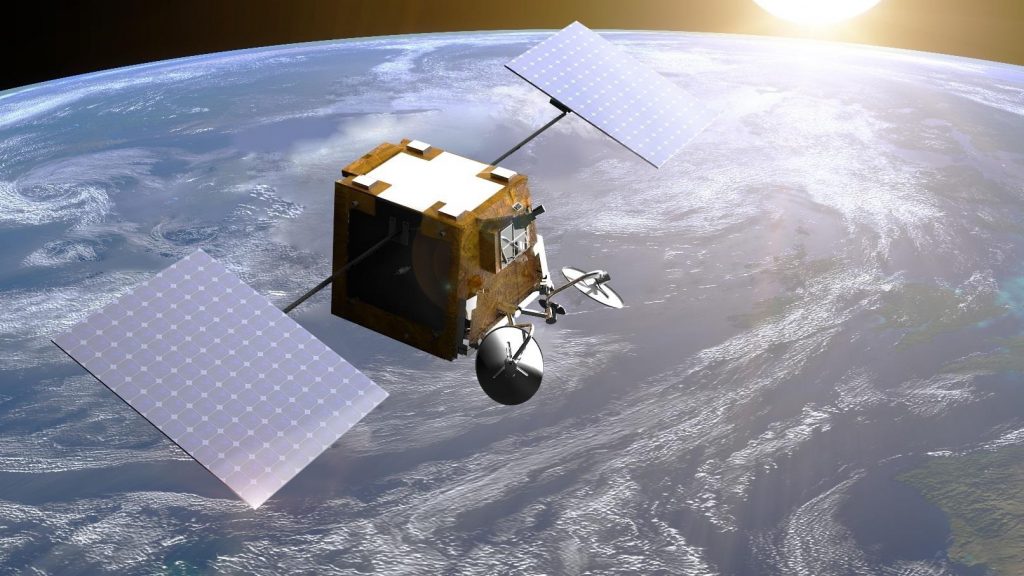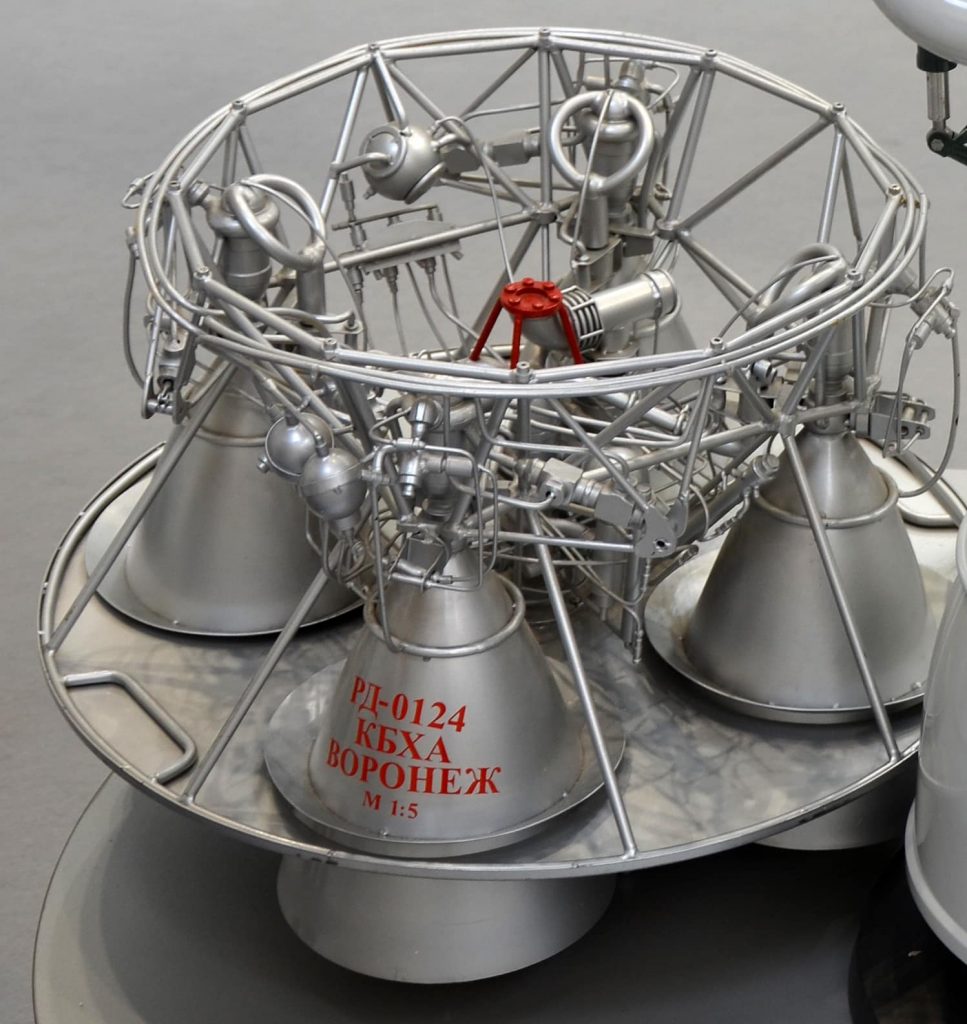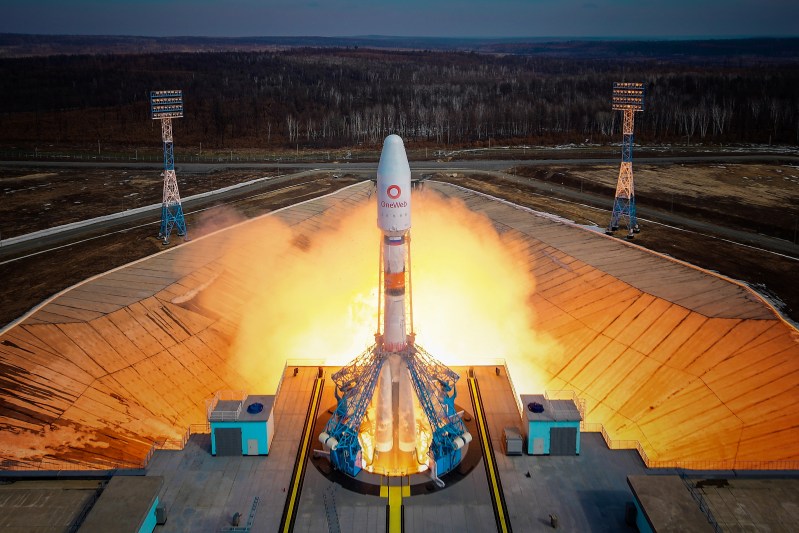Featured Image Credit: ROSCOSMOS
Lift Off Time | October 14, 2021 – 09:40 UTC | 14:40 ALMT |
|---|---|
Mission Name | OneWeb 11 |
Launch Provider | Russian Federal Space Agency / Arianespace |
Customer | OneWeb |
Rocket | Soyuz 2.1b |
Launch Location | Site 1S, Vostochny Cosmodrome, Russia |
Payload mass | 5,317 kg (~11,700 lbs) |
Where did the satellites go? | Polar low-Earth orbit. Initial orbit of 450 km circular at 87.4°, final orbit of 1,200 km |
Did they attempt to recover the first stage? | No, recovery is not a capability of Soyuz |
Did they attempt to recover the fairings? | No, recovery is not a capability of Soyuz |
Were these fairings new? | Yes |
This was the: | – 67th launch of Soyuz 2.1b – 61st Soyuz mission operated by Arianespace – 10th operational launch of OneWeb satellites – 96th orbital launch attempt of 2021 |
Where to watch | Official OneWeb replay Official Arianespace replay |
How Did It Go?
Arianespace successfully launched 36 OneWeb internet communication satellites on a Soyuz 2.1b rocket. The OneWeb 11 satellites will go to a 1,200 km polar orbit, having lifted off from Vostochny Cosmodrome, in Russia. OneWeb 11 boosted the number of OneWeb satellites launched to 358.
Despite Soyuz being a Russian rocket, the launch provider was Arianespace. Ariane subcontracts ROSCOSMOS to launch a Soyuz on their behalf.
What Is OneWeb?
OneWeb is a planned satellite internet constellation with the goal of providing internet coverage to the entire globe. Similar to SpaceX’s Starlink, the OneWeb constellation aims to deliver semi-low-latency internet to locations where ground-based internet is unreliable or unavailable.
OneWeb plans to have 648 satellites in their constellation, providing them with the 600 satellites needed for global coverage and an additional 48 on-orbit spares in case a satellite fails. These satellites are in a 1,200 km low-Earth polar orbit, which is significantly lower than the global internet services available today. Current satellite internet solutions orbit 35,786 km above the Earth, in geostationary orbit. However, the orbit of OneWeb’s satellites is still significantly higher than the 550 km orbit that SpaceX’s Starlink satellites are in. OneWeb is expecting the final 648 satellite constellation to provide download speeds of roughly 50 Mb/s.

The constellation consists of 18 orbital planes, with 36 satellites in each plane. However, in May of 2020, OneWeb submitted an application to the FCC, requesting to increase their constellation size to 48,000 satellites. OneWeb has also announced that the second generation of the OneWeb network will be a global navigation satellite system (GNSS), like GPS.
What Is A OneWeb Satellite?
Each OneWeb satellite has a compact design and a mass of 147.5 kg. The satellites are each equipped with a Ku-band antenna, operating between 12 and 18 GHz. One interesting note is that these satellites will use a slightly abnormal frequency, eliminating interference with satellites in geostationary orbit.
The OneWeb satellites were built by OneWeb satellites, which is a joint venture between OneWeb and Airbus.
The satellites are designed to safely deorbit after 25 years. However this leaves many concerned as this orbital region is already the most crowded with space debris.

OneWeb’s Return
In March of 2020, OneWeb filed for Chapter 11 bankruptcy and laid off most of their employees. However, OneWeb was able to maintain operations for the 74 satellites they currently had in orbit. In November of 2020, the UK government and Bharti Enterprises invested over a billion US dollars into OneWeb with the goal of finishing the constellation.
What Is Soyuz 2.1b?
The Soyuz rocket (also known as R7) has been the workhorse of the Soviet/Russian space program since it first flew in 1966. The Soyuz version currently being used for most satellite launches is a four-stage launch vehicle, that consists of:
- four side boosters
- a central core
- an upper stage which is common to all Soyuz rockets
- an optional Fregat upper stage (used on this mission)

Side Boosters
Each side booster has a singular RD-107A engine, which runs on liquid oxygen and RP-1. The RP-1 tanks are located in the cylindrical part of the booster. The liquid oxygen tanks are in the conical section. Each engine has four combustion chambers and four nozzles, which is common in older Russian engines as the USSR could not solve the problem of combustion instability in large nozzles.
During side booster separation, the boosters perform a well-known pattern, in which they peel off and cartwheel outwards. This is known as the “Korolev cross,” named after Sergei Korolev, the Chief Design Engineer of the USSR space program in the 1960s.

Soyuz Center Core
The center core is fitted with one RD-108A engine, which also has four combustion chambers and four nozzles. The engine contains four attitude thrusters, used for three-axis flight control once the side boosters have separated. The center core also runs on RP-1 and LOx.
Second Stage
The second stage uses an RD-0124 engine on the Soyuz 2.1b. This closed cycle engine runs on LOx and RP-1, producing 294 kN of thrust with an ISP of 359 seconds.

Soyuz Fregat Upper Stage
The Fregat upper stage is an autonomous and flexible stage that is designed to operate as an orbital vehicle. Fregat is independent of all the other stages. It has its own guidance, navigation, attitude control, tracking, and telemetry systems.
Fregat uses the S5.92 engine, which uses unsymmetrical dimethyl hydrazine (UDMH) for fuel and nitrogen tetroxide (NO4) for oxidizer. The engine can be restarted up to 50 times in flight.
The OneWeb 11 satellites will be attached to a payload adapter on this stage. The payload was deployed roughly 4 hours after launch.





